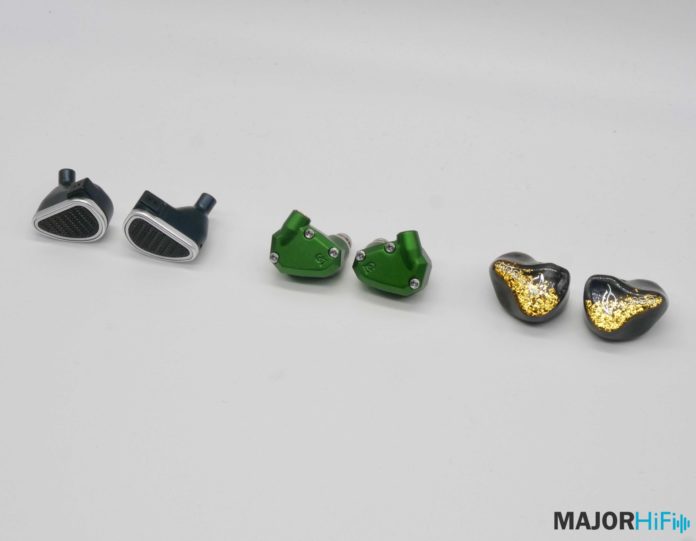With the recent release of 64 Audio’s Duo, it felt appropriate to do a comparison of some IEMs in the $1000 price range that are receiving the most buzz. In addition to the Duo, SeeAudio’s Neo IEM is also gaining a fair amount of attention at the moment, getting compared to a lot of longtime favorites. And speaking of longtime favorites, the Campfire Audio Andromeda felt like an obvious choice, as it’s always the first name I hear whenever an IEM close in price comes out. So let’s dive into the Duo, Neo, and Andromeda, and see what happens when we put three of the hottest IEMs up against one another.
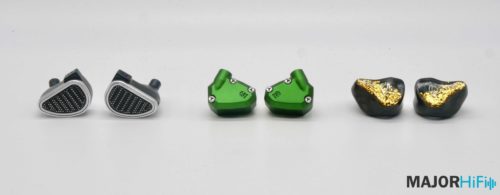
|
Duo |
Andromeda |
Neo |
|
| Price | $1,199 | $1,099 | $1,099 |
| Drivers | 1 BA high, 1 dynamic low | 2 BA high, 1 BA mid, 2 BA low | 4 BA low, 2 BA mids, 4 BA highs |
| Frequency Response | 20Hz – 20kHz | 10Hz – 28 kHz | 20Hz – 20 kHz |
| Impedence | 9 Ohms | 12.8 Ohms | 28 Ohms |
| Cable Type | 0.78mm / 3.5mm | MMCX / 3.5mm | 0.78mm / 3.5mm |

SEEAUDIO NEO
The Neo has a significantly stronger high mid than both the Duo and Andromeda. It’s the most snappy in the high frequencies in general. This gives it the highest intensity and definition in the mid range, helping to boost vocal presence along with the power of other instruments. The Neo has a more saturated, colored high end, similar in feel to the Andromeda’s high mid, just accented a bit further up. Its highs feel smooth and relatively relaxed, their brightness level sitting just above the Andromeda and a bit below the Duo.
The Neo performs with the most natural but least booming low end of the three. Its low end might have the most precise punch, as it’s focused on attack more than release, hence its less heavy sub range. The Neo has the most bite of the three, but is the least forgiving of mixes or voices high in resonance.
Best for: classical, folk, alternative, heavy metal,
Strengths: Increased vocal presence, extremely snappy, crisp mids, realistic lows, balanced high end, clean low mids
Weaknesses: high mid too extended for sensitive ears, low end lacking sub presence
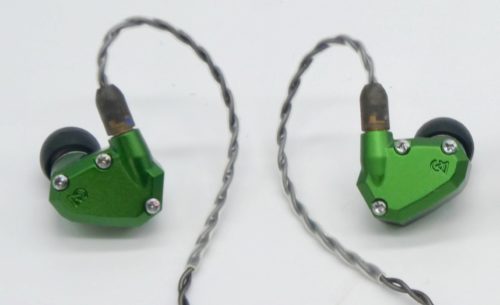
CAMPFIRE AUDIO ANDROMEDA
The Andromeda comes across with a more smoothed, recessed high mid and a less intense high end than the Neo. Despite its less intense high mid leveling compared to the Neo, the Andromeda still comes fairly close to it in terms of snap. The Andromeda feels equal in width to the Neo, but is a bit more airy and grounded by the low end in the middle, similar to the Duo. The Neo, on the other hand, spreads the entire composition out, as apposed to the Andromeda and Duo, which further confine some areas to the center, creating a more separated effect.
The Andromeda especially excels in its strong low mids and high lows. It carries less sub presence than the Duo, but uses this extra room to highlight a bit more high mid extension. The Andromeda also has more neutral, organic super highs than the Duo. The Andromeda is most defined by its abnormally strong impact along with its clean, nuanced saturation/coloring, which gives it the most distinctive sound of the three.
Best for: pop, electronic, jazz, country, classical
Strengths: Very pleasant saturation/color, great punch and impact, precise separation, strong but balanced low end
Weaknesses: Colored sound a bit polarizing, increased attack overshoots the mark at times, super highs could be less rounded
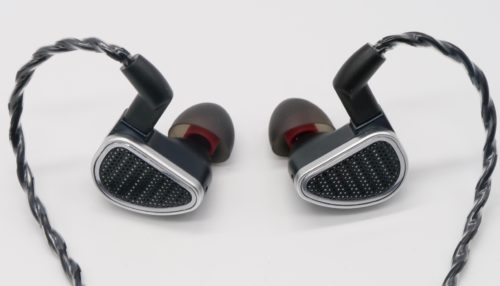
64 AUDIO DUO
The Duo has a much more subdued high mid than the Neo or Andromeda, giving it the smoothest, most intensely clean sound of the three. If you have sensitive ears, the Duo is arguably a no brainer, though the Andromeda is also an option if you can handle a certain amount of bite. While the Duo is the most subdued in its high mid, it is also the least subdued and brightest in its super highs. Combined with its smoothed out mids, this makes for a highly purified vocal sound, but also of course sacrifices a certain level of forwardness in the interest of natural timbre.
The Duo achieves engagement through its realistic, intimate detail more than it does by boosting or saturating mids, like the Andromeda and Neo do. The Duo also has the strongest sub response of the three, making it the most cinematic sounding, but also the most booming. The Duo has the most cleanly, realistic sound of the three, but sacrifices a fair amount of mid range intensity and low end balance to achieve this.
Best for: pop, electronic, rock, R&B, Hip-Hop, atmospheric, movie scores
Strengths: Extremely clean sound with smoothed high mids, cinematic sub response, high gloss brightness, warm low frequencies.
Weaknesses: Subdued high mids reduce vocal/instrument presence at times, sub response too strong for some productions, high end too bright for certain breathy, airy sounds
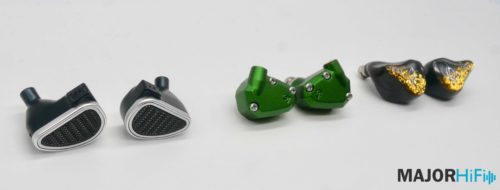
Overall
These all hold their own like I thought they would, but are drastically different. Each of these IEMs has a very particular, unique character to it, and they all execute their specific missions with astounding nuance and accuracy. My comparisons likely paint a more extreme image of each of their tunings, as their characteristics felt more jarring with my ears having to readjust each time I switched pairs. Whichever pair you get, their biases will start to feel more subconscious overtime, of course. If you’re between the three of these, hopefully I’ve made the choice slightly easier, but it will always be a tough one with IEMs at this level of quality.
You can purchase the SeeAudio Neo, Campfire Andromeda, and 64 Audio Duo at Audio46
Compare the ranking of various headphones, earbuds and in-ear monitors using our tools.
Discuss this, and much more, over on our forum.
---MAJORHIFI may receive commissions from retail offers.


